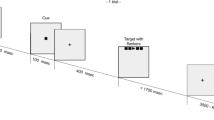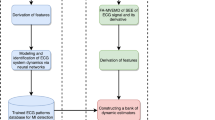Abstract
Despite increased application of the deceleration capacity (DC) and acceleration capacity (AC) of heart rate indices as indicators of autonomic nervous system (ANS) function, it remains controversial as to whether they reflect cardiac sympathetic or vagal activity. We addressed this problem using a cardiovascular system model that allows analysis of DC and AC under controllable levels of sympathetic and vagal activities. Multi-scale DCs and ACs with various timescales T and wavelet scales s were computed from the simulated RR interval series under randomly fluctuating levels of ANS activity, and the correlations of the indices to ANS functions were assessed. Results showed that under the conventional scales (T = 1, s = 2), both DC and AC were solely dependent on vagal activity. With higher scales (T = 3, s = 5), both DC and AC were positively correlated to sympathetic activity and negatively correlated to vagal activity. These data suggest that DC and AC provide information on the same aspects of ANS activity and that their physiological significance is highly influenced by the timescales and wavelet scales used in the computation.







Similar content being viewed by others
References
Adeli H, Zhou Z, Dadmehr N (2003) Analysis of EEG records in an epileptic patient using wavelet transform. J Neurosci Methods 123:69–87
Akay M (1994) Biomedical signal processing. Academic, San Diego
Bas R, Vallverdú M, Valencia JF, Voss A, de Luna AB, Caminal P (2015) Evaluation of acceleration and deceleration cardiac processes using phase-rectified signal averaging in healthy and idiopathic dilated cardiomyopathy subjects. Med Eng Phys 37:195–202
Bauer A, Barthel P, Schneider R, Ulm K, Müller A, Joeinig A, Stich R, Kiviniemi A, Hnatkova K, Huikuri H, Schömig A, Malik M, Schmidt G (2009) Improved Stratification of Autonomic Regulation for risk prediction in post-infarction patients with preserved left ventricular function (ISAR-Risk). Eur Heart J 30:576–583
Bauer A, Kantelhardt JW, Barthel P, Schneider R, Makikallio T, Ulm K, Hnatkova K, Schornig A, Huikuri H, Bunde A, Malik M, Schmidt G (2006) Deceleration capacity of heart rate as a predictor of mortality after myocardial infarction: cohort study. Lancet 367:1674–1681
Bauer A, Kantelhardt JW, Bunde A, Barthel P, Schneider R, Malik M, Schmidt G (2006) Phase-rectified signal averaging detects quasi-periodicities in non-stationary data. Phys A 364:423–434
Billman GE (2011) Heart rate variability: a historical perspective. Front Physiol 2:1–13
Campana LM, Owens RL, Clifford GD, Pittman SD, Malhotra A (2010) Phase-rectified signal averaging as a sensitive index of autonomic changes with aging. J Appl Physiol 108:1668–1673
Chattipakorn N, Incharoen T, Kanlop N, Chattipakorn S (2007) Heart rate variability in myocardial infarction and heart failure. Int J Cardiol 120:289–296
Fonoberova M, Mezić I, Buckman JF, Fonoberov VA, Mezić A, Vaschillo EG, Mun E-Y, Vaschillo B, Bates ME (2014) A computational physiology approach to personalized treatment models: the beneficial effects of slow breathing on the human cardiovascular system. Am J Physiol Heart Circ Physiol 307:H1073–H1091
Galinier M, Pathak A, Fourcade J, Androdias C, Curnier D, Varnous S, Boveda S, Massabuau P, Fauvel M, Senard JM, Bounhoure JP (2000) Depressed low frequency power of heart rate variability as an independent predictor of sudden death in chronic heart failure. Eur Heart J 21:475–482
Georgieva A, Papageorghiou AT, Payne SJ, Moulden M, Redman CWG (2014) Phase-rectified signal averaging for intrapartum electronic fetal heart rate monitoring is related to acidaemia at birth. BJOG Int J Obstet Gy 121:889–894
Grassi G, Seravalle G, Cattaneo BM, Lanfranchi A, Vailati S, Giannattasio C, Del Bo A, Sala C, Bolla GB, Pozzi M (1995) Sympathetic activation and loss of reflex sympathetic control in mild congestive heart failure. Circulation 92:3206–3211
Guyenet PG (2006) The sympathetic control of blood pressure. Nat Rev Neurosci 7:335–346
Houle MS, Billman GE (1999) Low-frequency component of the heart rate variability spectrum: a poor marker of sympathetic activity. Am J Physiol Heart Circ Physiol 276:H215–H223
Huikuri HV, Perkiomaki JS, Maestri R, Pinna GD (2009) Clinical impact of evaluation of cardiovascular control by novel methods of heart rate dynamics. Philos Trans R Soc A 367:1223–1238
Kantelhardt JW, Bauer A, Schumann AY, Barthel P, Schneider R, Malik M, Schmidt G (2007) Phase-rectified signal averaging for the detection of quasi-periodicities and the prediction of cardiovascular risk. Chaos 17:015112
Kikuya M, Hozawa A, Ohokubo T, Tsuji I, Michimata M, Matsubara M, Ota M, Nagai K, Araki T, Satoh H, Ito S, Hisamichi S, Imai Y (2000) Prognostic significance of blood pressure and heart rate variabilities: the Ohasama study. Hypertension 36:901–906
Kisohara M, Stein PK, Yoshida Y, Suzuki M, Iizuka N, Carney RM, Watkins LL, Freedland KE, Blumenthal JA, Hayano J (2013) Multi-scale heart rate dynamics detected by phase-rectified signal averaging predicts mortality after acute myocardial infarction. Europace 15:437–443
Korner PI, West MJ, Shaw J, Uther JB (1974) ‘Steady-state’ properties of the baroreceptor-heart rate reflex in essential hypertension in man. Clin Exp Pharmacol Physiol 1:65–76
La Rovere MT, Pinna GD, Maestri R, Mortara A, Capomolla S, Febo O, Ferrari R, Franchini M, Gnemmi M, Opasich C, Riccardi PG, Traversi E, Cobelli F (2003) Short-term heart rate variability strongly predicts sudden cardiac death in chronic heart failure patients. Circulation 107:565–570
Lewek J, Wranicz JK, Guzik P, Chudzik M, Ruta J, Cygankiewicz I (2009) Clinical and electrocardiographic covariates of deceleration capacity in patients with ST-segment elevation myocardial infarction. Cardiol J 16:528–534
Lombardi F, Malliani A, Pagani M, Cerutti S (1996) Heart rate variability and its sympatho-vagal modulation. Cardiovasc Res 32:208–216
Mateo J, Laguna P (2003) Analysis of heart rate variability in the presence of ectopic beats using the heart timing signal. IEEE Trans Biomed Eng 50:334–343
Nasario O, Benchimol-Barbosa PR, Nadal J (2014) Refining the deceleration capacity index in phase-rectified signal averaging to assess physical conditioning level. J Electrocardiol 47:306–310
Olshansky B, Sabbah HN, Hauptman PJ, Colucci WS (2008) Parasympathetic nervous system and heart failure: pathophysiology and potential implications for therapy. Circulation 118:863–871
Pan Q, Gong Y, Gong S, Hu Q, Zhang Z, Yan J, Ning G (2010) Enhancing the deceleration capacity index of heart rate by modified-phase-rectified signal averaging. Med Biol Eng Comput 48:399–405
Pomeranz B, Macaulay RJ, Caudill MA, Kutz I, Adam D, Gordon D, Kilborn KM, Barger AC, Shannon DC, Cohen RJ et al (1985) Assessment of autonomic function in humans by heart rate spectral analysis. Am J Physiol Heart Circ Physiol 248:H151–H153
Ponikowski P, Anker SD, Chua TP, Szelemej R, Piepoli M, Adamopoulos S, Webb-Peploe MK, Harrington MD, Banasiak W, Wrabec K, Coats AJS (1997) Depressed heart rate variability as an independent predictor of death in chronic congestive heart failure secondary to ischemic or idiopathic dilated cardiomyopathy. Am J Cardiol 79:1645–1650
Porta A, Casali KR, Casali AG, Gnecchi-Ruscone T, Tobaldini E, Montano N, Lange S, Geue D, Cysarz D, Van Leeuwen P (2008) Temporal asymmetries of short-term heart period variability are linked to autonomic regulation. Am J Physiol Regul Integr Comp Physiol 295:R550–R557
Porta A, Guzzetti S, Montano N, Gnecchi-Ruscone T, Furlan R, Malliani A (2006) Time reversibility in short-term heart period variability. Comput Cardiol 2006:77–80
Ricca-Mallada R, Migliaro ER, Piskorski J, Guzik P (2012) Exercise training slows down heart rate and improves deceleration and acceleration capacity in patients with heart failure. J Electrocardiol 45:214–219
Rivolta MW, Stampalija T, Casati D, Richardson BS, Ross MG, Frasch MG, Bauer A, Ferrazzi E, Sassi R (2014) Acceleration and deceleration capacity of fetal heart rate in an in-vivo sheep model. PLoS ONE 9:e104193
Sacha J, Sobon J, Sacha K, Muller A, Schmidt G (2011) Short-term deceleration capacity reveals higher reproducibility than spectral heart rate variability indices during self-monitoring at home. Int J Cardiol 152:271–272
Schroeder EB, Chambless LE, Liao D, Prineas RJ, Evans GW, Rosamond WD, Heiss G (2005) Diabetes, glucose, insulin, and heart rate variability: the Atherosclerosis Risk in Communities (ARIC) study. Diabetes Care 28:668–674
Schroeder EB, Liao D, Chambless LE, Prineas RJ, Evans GW, Heiss G (2003) Hypertension, blood pressure, and heart rate variability: the Atherosclerosis Risk in Communities (ARIC) study. Hypertension 42:1106–1111
Singh N, Mironov D, Armstrong PW, Ross AM, Langer A, Investigators ftGES (1996) Heart rate variability assessment early after acute myocardial infarction: pathophysiological and prognostic correlates. Circulation 93:1388–1395
Stampalija T, Casati D, Montico M, Sassi R, Rivolta MW, Maggi V, Bauer A, Ferrazzi E (2015) Parameters influence on acceleration and deceleration capacity based on trans-abdominal ECG in early fetal growth restriction at different gestational age epochs. Eur J Obstet Gynecol Reprod Biol 188:104–112
Tarvainen MP, Ranta-aho PO, Karjalainen PA (2002) An advanced detrending method with application to HRV analysis. IEEE Trans Biomed Eng 49:172–175
Task Force of The European Society of Cardiology and The North American Society of Pacing and Electrophysiology (1996) Heart rate variability: standards of measurement, physiological interpretation, and clinical use. Circulation 93:1043–1065
Taylor JA, Carr DL, Myers CW, Eckberg DL (1998) Mechanisms underlying very-low-frequency RR-interval oscillations in humans. Circulation 98:547–555
Tsuji H, Larson MG, Venditti FJ, Manders ES, Evans JC, Feldman CL, Levy D (1996) impact of reduced heart rate variability on risk for cardiac events: the Framingham Heart study. Circulation 94:2850–2855
Ursino M (1998) Interaction between carotid baroregulation and the pulsating heart: a mathematical model. Am J Physiol Heart Circ Physiol 44:H1733–H1747
Ursino M, Magosso E (2003) Role of short-term cardiovascular regulation in heart period variability: a modeling study. Am J Physiol Heart Circ Physiol 284:H1479–H1493
Webb SW, Adgey AAJ, Pantridge JF (1972) Autonomic disturbance at onset of acute myocardial-infarction. Br Med J 3:89–92
Acknowledgments
This research was supported by the National Natural Science Foundation of China (Grant Nos. 81401491, 81271662), the Natural Science Foundation of Zhejiang Province (Grant No. LQ14H180001), and Zhejiang Provincial Key Laboratory of Communication Networks and Applications.
Author information
Authors and Affiliations
Corresponding author
Ethics declarations
Conflict of interest
The authors declare that they have no conflict of interest.
Rights and permissions
About this article
Cite this article
Pan, Q., Zhou, G., Wang, R. et al. Do the deceleration/acceleration capacities of heart rate reflect cardiac sympathetic or vagal activity? A model study. Med Biol Eng Comput 54, 1921–1933 (2016). https://doi.org/10.1007/s11517-016-1486-9
Received:
Accepted:
Published:
Issue Date:
DOI: https://doi.org/10.1007/s11517-016-1486-9




